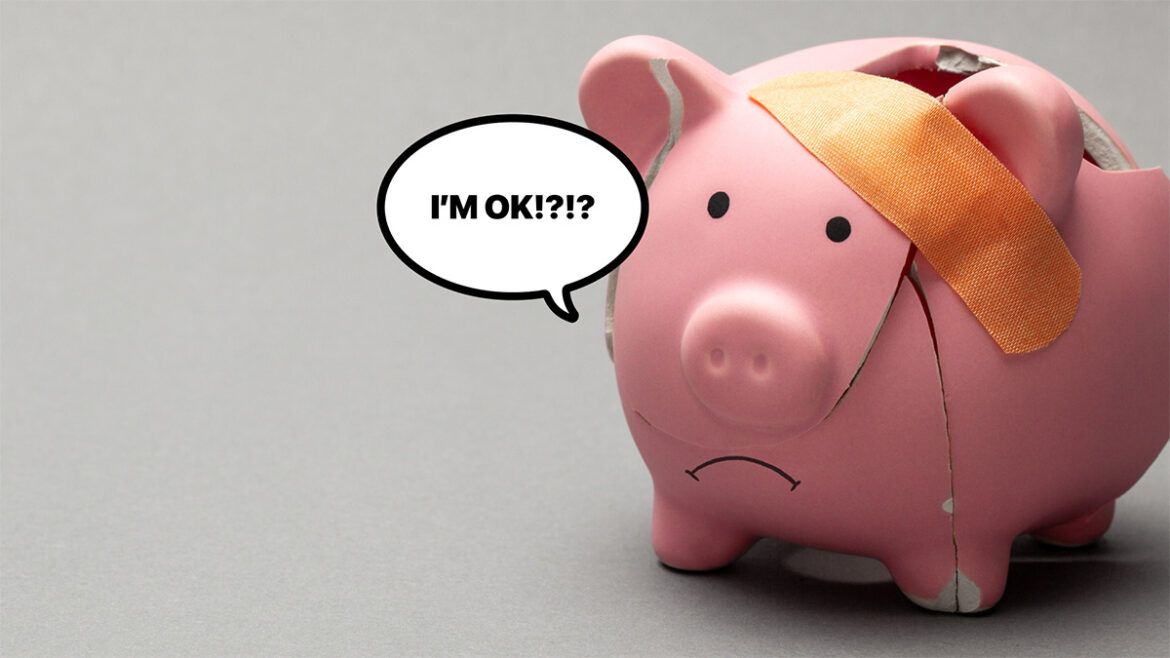The recent news about the Silicon Valley Bank collapse has left many people wondering about their own financial security. I’ve received a lot of questions about which banks will be affected, and whether this is a bailout. But the most important question we need to address is how this situation affects you and your finances.
Now, I’m not going to lie to you – the idea of a bank collapsing can be pretty scary. I still remember back in 2008 when my bank Washington Mutual collapsed and was bought out by Chase bank. It was super stressful, and I know how difficult it can be to maneuver. That’s why I want to share some tips on how you can protect your finances during this time.
1. The Human Aspect of a Bank Collapse
First things first – it’s important to understand the human aspect of a bank collapse. It’s not just about money – it’s also about our emotional and mental well-being. Our finances are intertwined with our daily lives, and a bank collapse can leave us feeling anxious and uncertain about the future. But you can take steps to protect yourself financially and mentally from the banking industry.
2. Red Flags to be aware of
While predicting or knowing when a bank will fail from a consumer point of view might be a far-fetched idea. There are some signs to look out for. Keep an eye on declining stock prices, high levels of bad debt, and relaxed lending practices. And don’t forget to listen to your friends, co-workers, and even podcasts about the type of business your bank is involved in. When you start hearing about “too good to be true” programs, that’s a red flag to keep in mind.
3. Understanding FDIC Insurance
The most important thing you can do to protect yourself from a bank collapse is to make sure your bank has FDIC insurance. Whether you’re working with an online bank, a big bank, or a fintech company. You should always double-check to make sure you see the FDIC logo. This agency works with the Feds to ensure that if your bank fails, you’ll be covered up to $250,000. Now, the way FDIC insurance works is a little more complicated than most people realize. But don’t worry, I’ve got you.
How FDIC Insurance Works
Technically, $250,000 is per bank, per depositor, and per account ownership type (individual, joint, retirement, or business). This means that all of the different checking, savings, and CD accounts that are individually owned and held at the same bank will be compiled together under the $250,000 insurance cap. Regardless of how many accounts you have.
FDIC Insurance for Joint Accounts
It’s important to note that this FDIC Insurance also applies to joint accounts. Therefore, if you have a joint account with your spouse, each owner of the account is entitled to $250,000 of insurance coverage. That’s a total of $500K and this is separate from their individual accounts. If you want to test this out, I highly recommend checking out the EDIE feature on the FDIC website.
4. Diversifying Your Banks
To maximize your FDIC insurance coverage, it’s a good idea to diversify your banks. Instead of managing all your finances through just one bank, I recommend working with 2-3 banks. At first, it might seem like a lot to manage, but trust me, it’s worth it. This means breaking down which accounts of the High-5 Banking Method work best for your financial goals. Then evaluating your current bank accounts to see which accounts work best at which banks. For instance, you can repurpose your current checking account at your big bank specifically for your bills. Or you can open a new HYSA at a new bank specifically for your emergency fund.
Choosing the Right Banks
When diversifying the banks you do business with, consider the small details such as hidden fees and charges, convenience, interest rates, reputation, and the services they offer. You can also check Twitter and Facebook boards for real customer reviews. This can offer you a lot of insight that you won’t get just anywhere.
I want to remind you that there are many reasons why you should have more than one bank. This is just a small wake-up call that even small businesses are realizing.
Taking Action to Protect Your Finances
Even though bank collapses and takeovers can be scary. There are steps you can take to protect yourself financially and mentally during these times. Understanding the human aspect of a bank collapse, making sure your bank is FDIC insured, and diversifying your banks are all important steps to take. By following these tips, as a community, we can rest easy knowing that we’ve taken action to protect our finances. Mi hente, remember to stay informed, stay calm, and take action to protect your money.
Other Related Content
- Emergency Fund: What is it and How much do you need
- Standard Operating Procedure (SOP) for your Finances
- Family All-Hands Meeting
